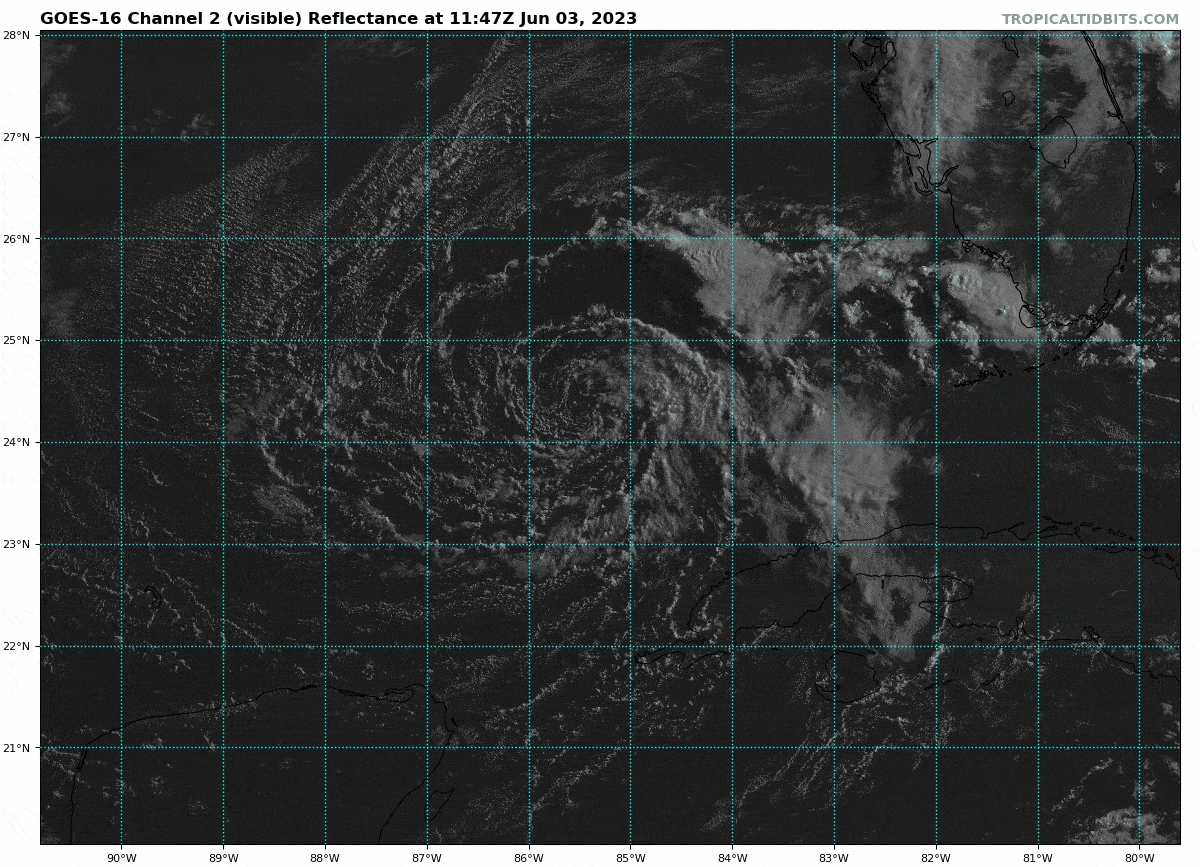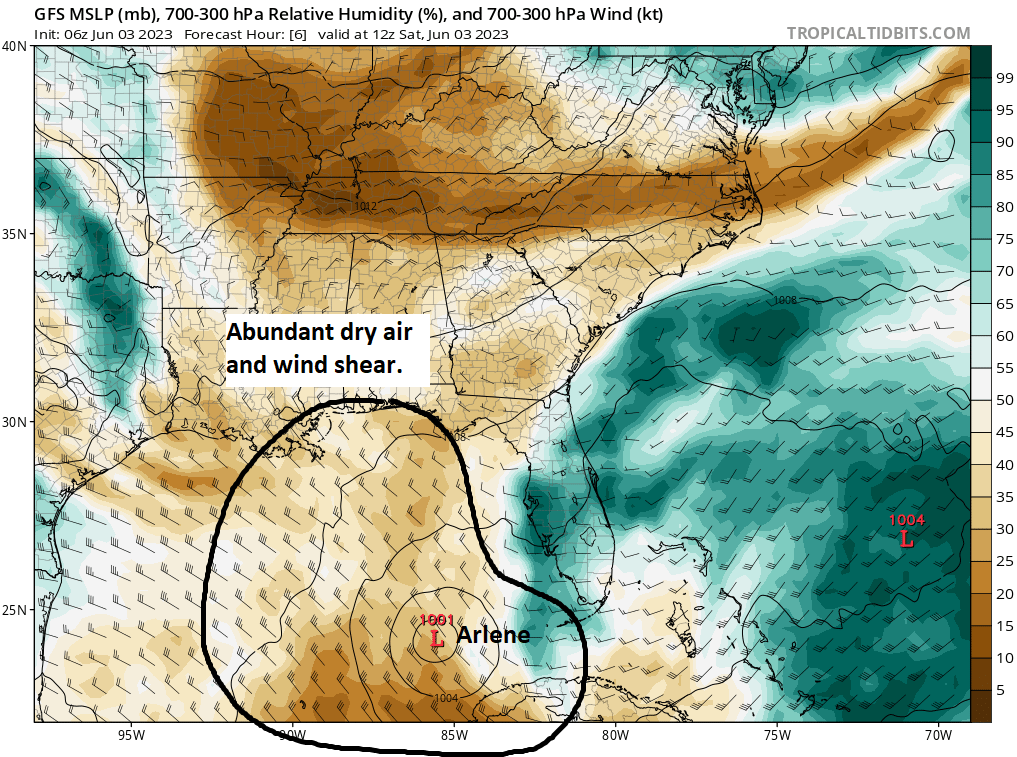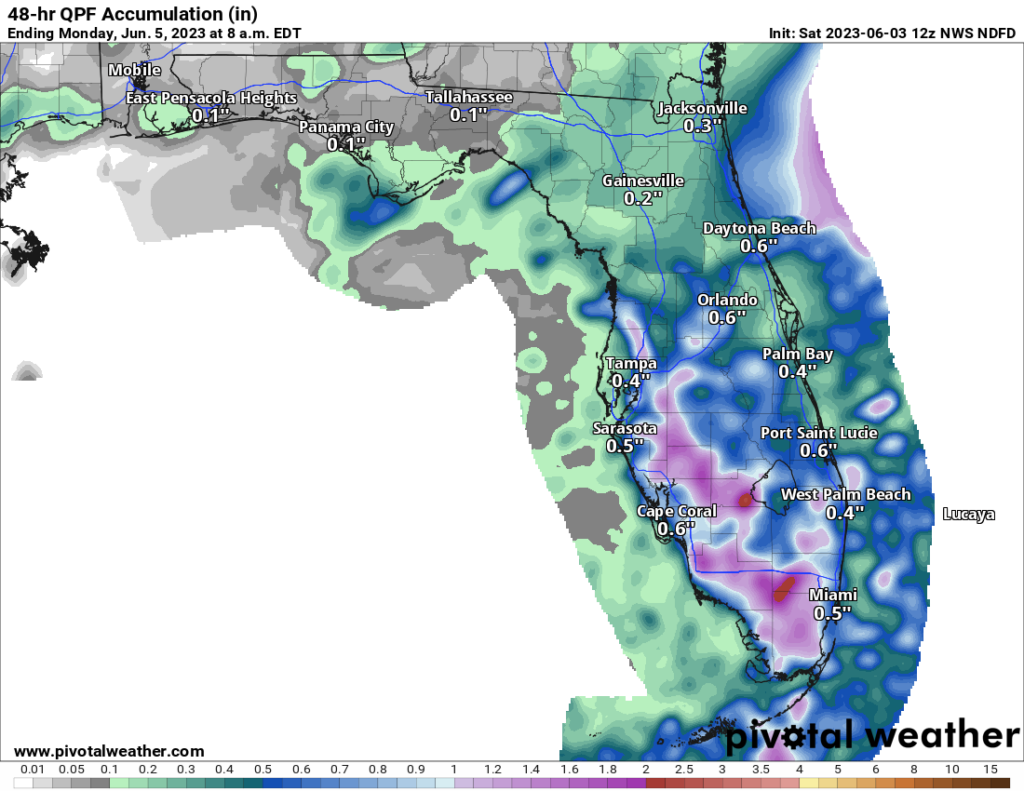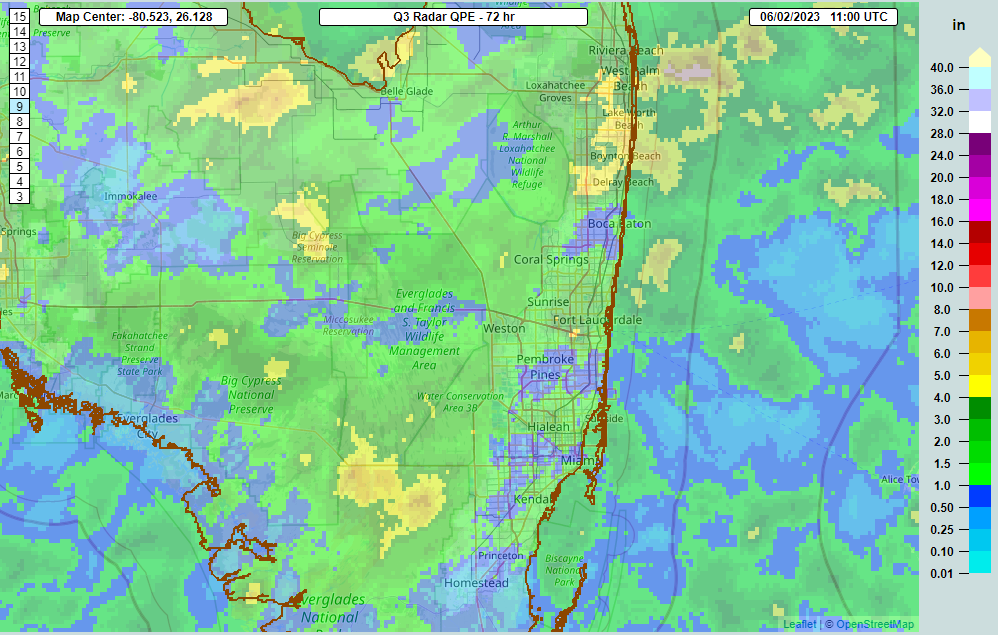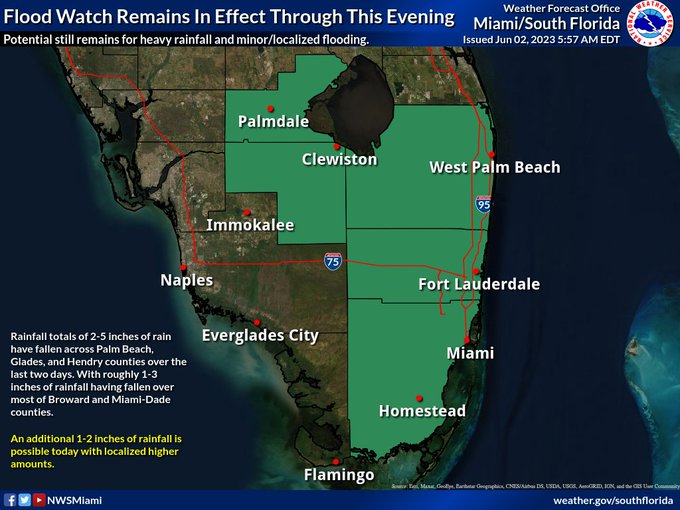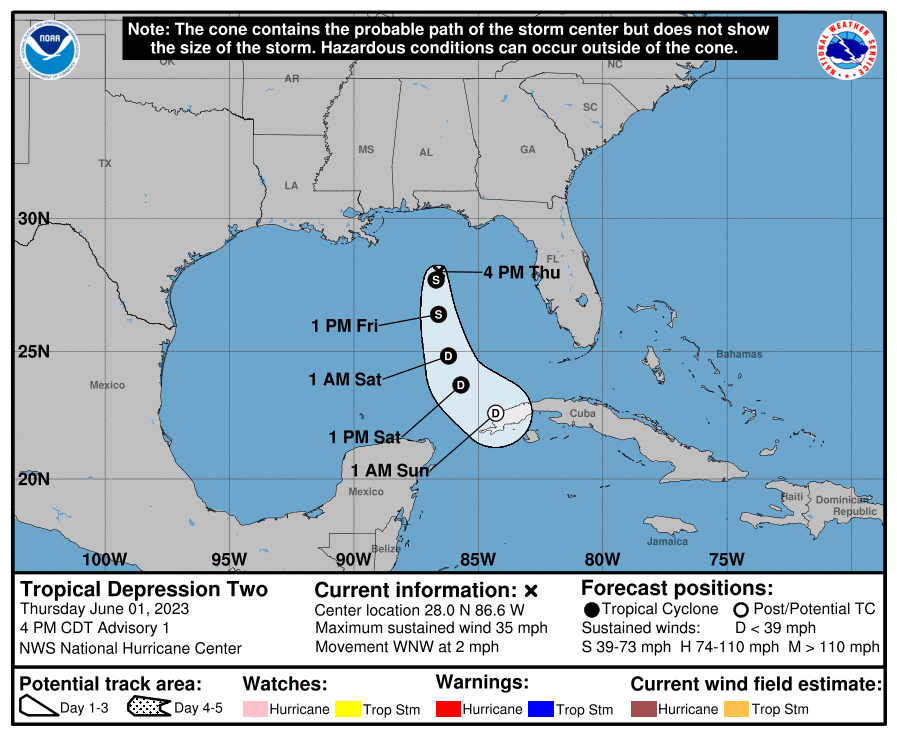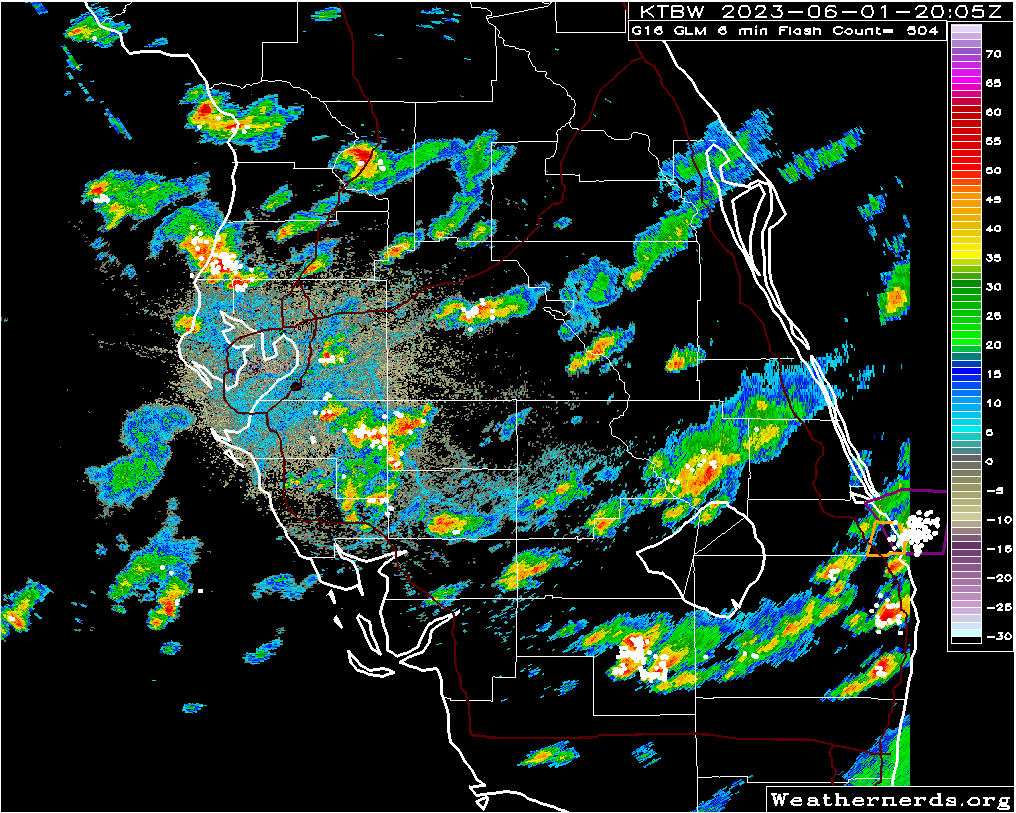Good morning. Welcome to the first full week of The Eyewall, now a true tropical site since we had our first storm. A quick reminder, you can subscribe to our daily emails or reach our social media sites at the right on a desktop. If you’re on your phone, scroll down to the bottom of the page, and you’ll see the sign up form, as well as links to our social media sites just above the bottom. Facebook, Twitter, and the Gram are fully functional now. Still some work to do with TikTok. We’ll get there.
We’ll start this week by tying a closure ribbon around Arlene. It’s somewhat instructive to just look at how much rain has fallen over Florida for the last week.
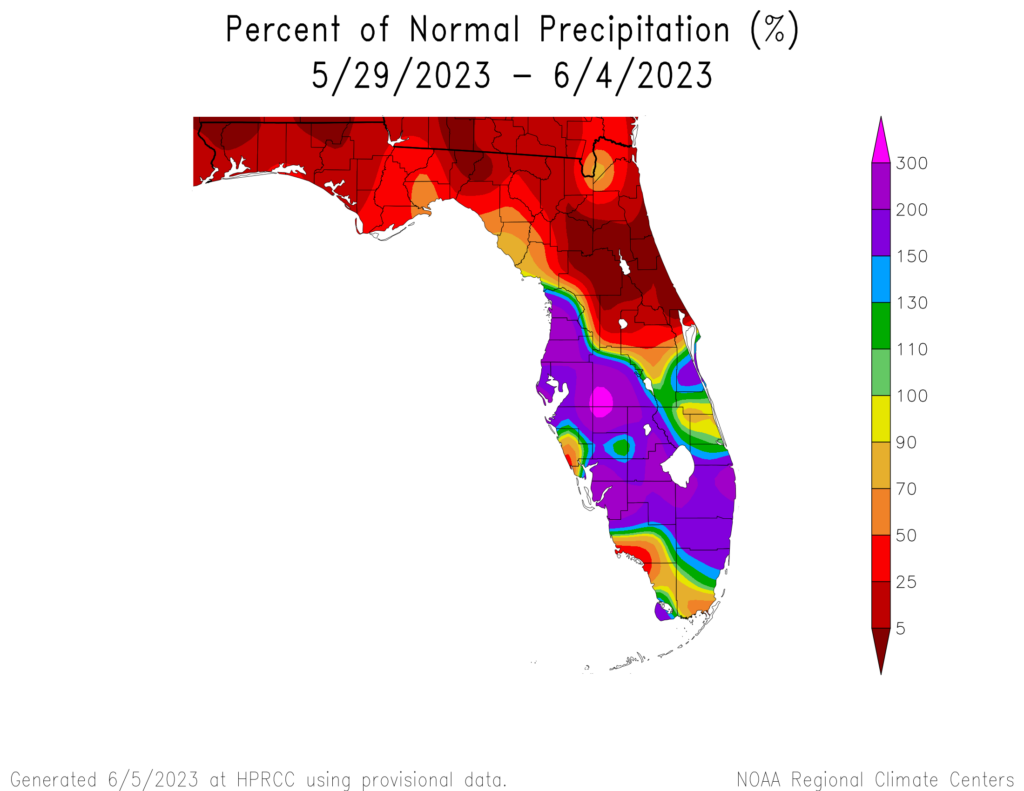
A nice reminder for hurricane season that impacts from storms are not always straightforward. While there has not been any real widespread flooding in Florida, there have been a few wild storms and certainly some localized flooding over the last week tangentially associated with Arlene. The highest June 1 through June 4 rain total I found in Florida as of yesterday morning’s CoCoRaHS reports was just shy of 8 inches of rain near Parrish, FL, which is just southeast of the Tampa Bay area in Manatee County. It should hopefully be a bit of a calmer week across Florida this week.
One-sentence summary
The tropics look fairly inactive over the course of this week, with little to watch.
Happening now: Not much
It’s quiet out there. Whatever is left of Arlene is getting funneled east and north toward a rather beastly upper level low that’s expected to pester coastal New England and Atlantic Canada through the week with rain chances and cooler than average temperatures. This is not a tropical feature, but it’s nonetheless interesting.
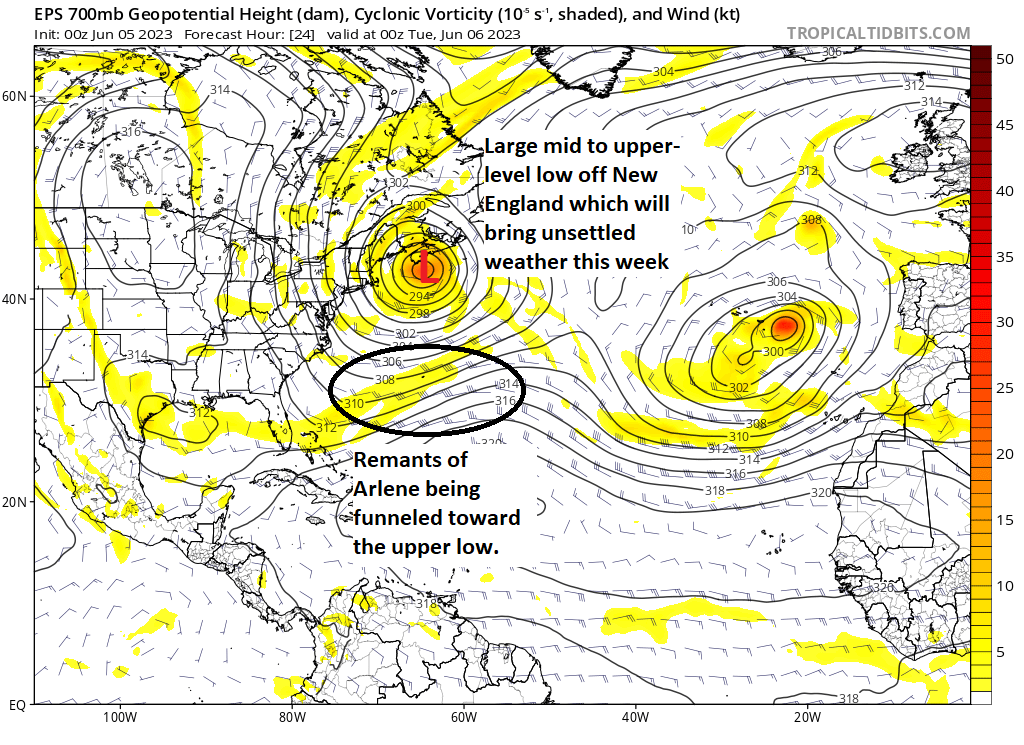
The National Hurricane Center has also tagged an area way, way out in the Atlantic south of the Azores for a 10 percent chance of development. That would be bizarre, but as of now it’s not a high probability risk. Aside from that, there’s nothing out there that’s a candidate for development this week.
The medium range (days 6-10): Still expected quiet
Not a lot to speak of for the next forecast period from the weekend into next week. The New England upper level storm exits, and another may try to follow suit for the Mid-Atlantic. The basin itself looks pretty quiet, which begs the question: Where should we be looking for development in June anyway?
When we think about early to mid June, we think about two areas mostly: The Gulf and the northwest Caribbean. Though the map above cuts off in 2015, you get a pretty good idea of what history favors. In that sense, Arlene was not exactly abnormal. By far, the highest density of development in mid-June, however is the northwest Caribbean. So if you want to look for something, look there. Which brings us to…
Fantasyland (beyond day 10): Maybe watching the northwest Caribbean
So, if you are an avid model watcher, you may have noticed the last few runs of the GFS operational model picking up on what I derisively refer to as a “scareicane” on days 14-16 of the model run. The reason I call it that is because the GFS model in particular is notorious for taking relatively minor disturbances on day 10+ and inconsistently blowing them up into scary looking Gulf or Caribbean storms. In other words, if it looks crazy on day 15 or 16, it probably is.
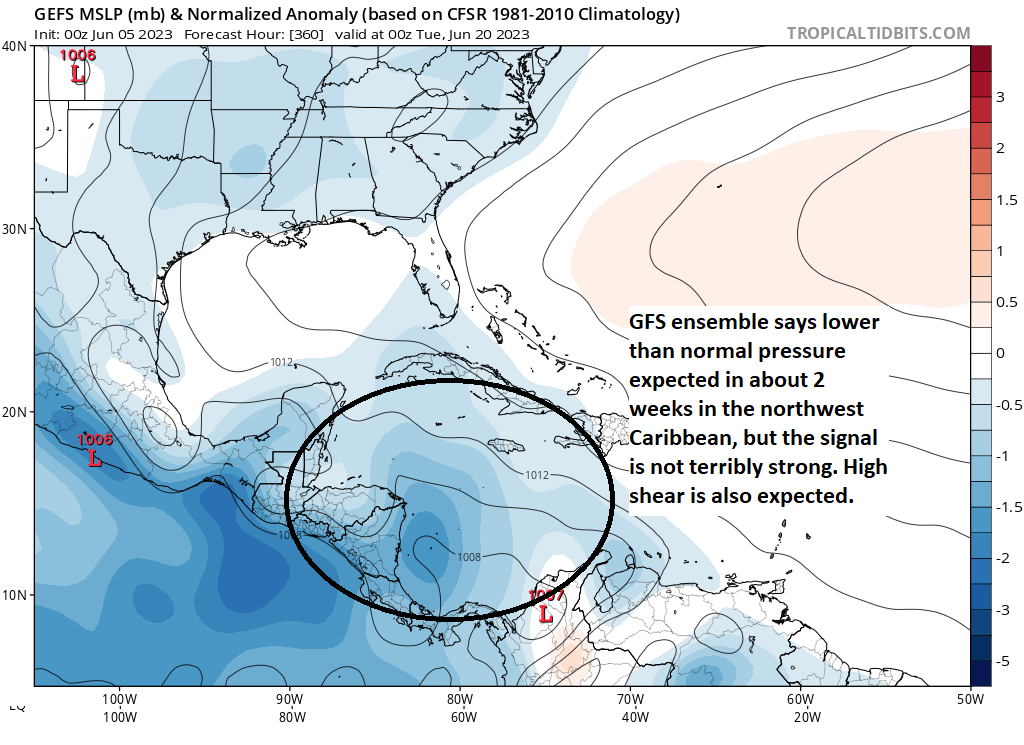
That said, if you dig a bit deeper, there is some reason to at least pencil in the June 20th (or later) period as one to perhaps watch for our next development window. As you can see above, there is support for lower than average surface pressure in the northwest Caribbean in about 2 weeks, but nothing that exactly stands out. However, we’re going to have a pattern more favorable for rising air, an ingredient tropical systems like, begin to move toward the eastern Pacific and perhaps far western Caribbean, or so it seems, around that time. Usually, when I see these signals in the modeling, it means that there may be something to come, but the GFS operational model is probably a solid 7 to 10 days too quick showing it out there. Judging by the potential for some of these better ingredients lagging the end of the run by a few days, that makes sense here. So that pushes us out closer to June 25th, give or take. A somewhat better signal appears to show up in the Pacific, so we’ll probably see something attempt development there before our next chance on the Atlantic side. That said, wind shear looks to remain quite strong, so as of now, all of this falls very much under “curiosity” more than concern.
In sum: Conditions may begin to get a bit more favorable for some sort of tropical system by late June, but it’s best to ignore any operational models showing rogue day 14+ hurricanes right now, as that is a very unlikely outcome. We’ll be back with more tomorrow.
In the meantime, please feel free to comment or drop us a feedback form to tell us what you like or dislike about these daily outlooks. You can expect this sort of update each weekday morning through October or November, with more frequent updates when there are storms threatening land. Feedback is always valued, but especially so right now as a new site. Thanks for your early support!


